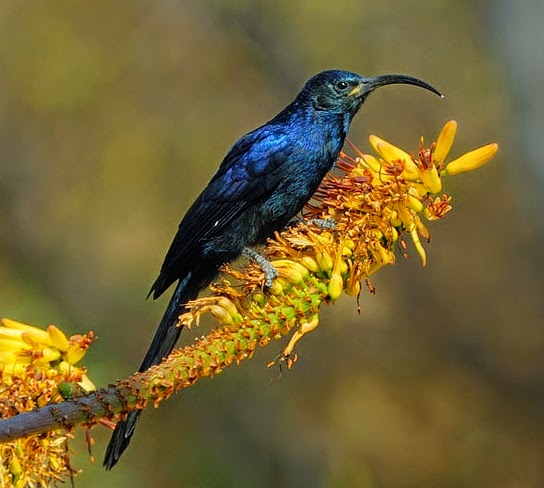 |
| (Photo from Animals Globe) |
Common name:
common scimitarbill (en); bico-de-cimitarra (pt); irrisor namaquois (fr); abubilla-arbórea cimitarra (es); sichelhopf (de)
Taxonomy:
Order Coraciiformes
Family Phoeniculidae
Range:
This species is found from south-western Somalia, southern Kenya and southern Uganda, through Tanzania, southern D.R. Congo and Zambia, and into southern Angola, Namibia, Mozambique, Botswana, Zimbabwe and northern South Africa.
Size:
These birds are 26-30 cm long and weigh 24-42 g.
Habitat:
The common scimitarbill is mostly found in dry tropical scrublands, also using dry savannas and dry tropical forests, particularly in areas dominated by Brachystegia and Colophospermum mopane, but also in palm stands. They occur from sea level up to an altitude of 2.000 m.
Diet:
They feed mainly on insects, including ants and their larvae, wasps, flies, caterpillars and beetles, but also take spiders, grubs and nectar.
Breeding:
Common scimitarbills breed in August-June, varying among different parts of their range. They nest in tree cavities, which can be either natural or old woodpecker or barbet nests. Sometimes the same nest site is used repeatedly over multiple breeding seasons. The female lays 2-4 eggs which she incubates alone for 13-14 days. The chicks fledge 21-24 days after hatching.
Conservation:
IUCN status – LC (Least Concern)
This species has a very large breeding range and is reported to be widespread and locally common in some areas. The population is suspected to be in decline owing to destruction of large trees which provide nesting, foraging and roosting sites.







